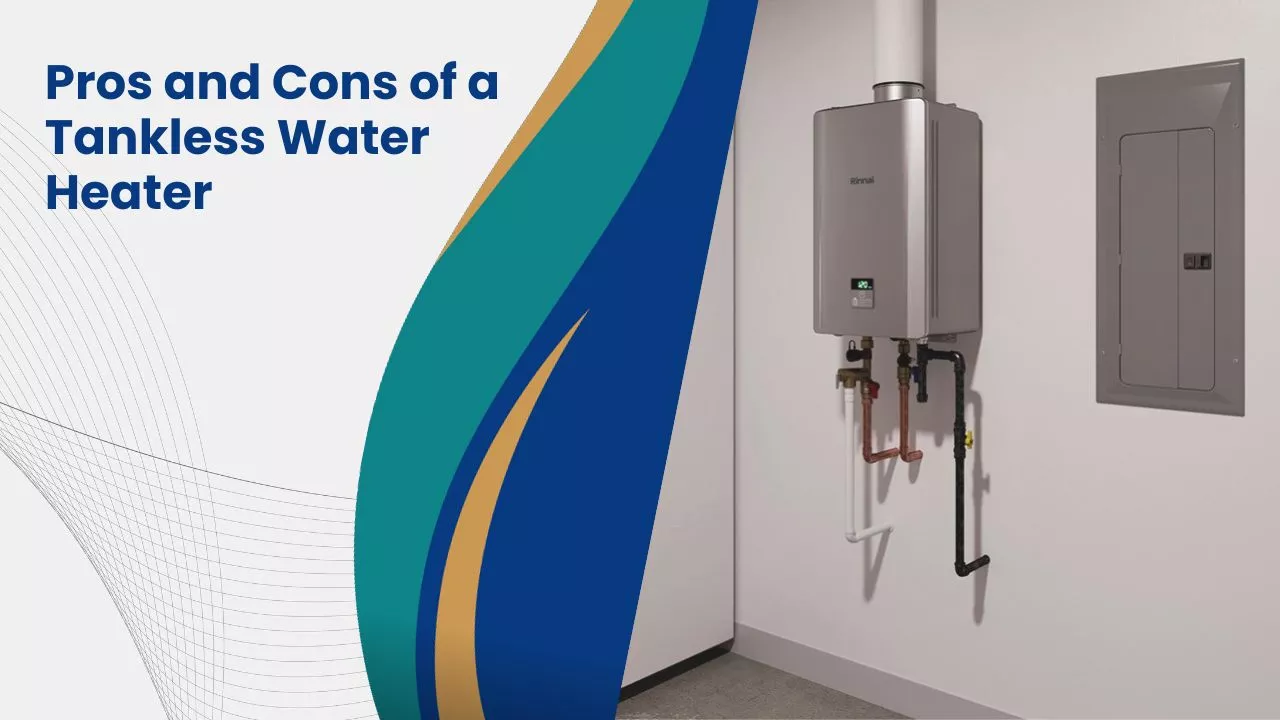The tankless water heater, also known as an on-demand or instant water heater, has seen great rise in popularity in recent years as an energy-efficient alternative to traditional tank-based water heaters. These systems offer hot water as needed rather than keeping it in a tank by heating the water as it passes through the system. When determining whether to buy a tankless water heater, there are some advantages and drawbacks to take into account, just like with other device. The pros and cons of Tankless Water Heater will be covered in this article to help you make an informed decision.
Advantages of Tankless Water Heaters
-
Energy Efficiency:
One of the main advantages of tankless water heaters is that they are energy efficient. The standby energy losses connected with conventional tank-based systems are avoided by these units because they only heat water when it is actually needed. Lower utility bills and energy savings of up to 50% are possible outcomes of this.
2. Constant Flow of Hot Water:
Tankless water heaters deliver a steady stream of hot water, guaranteeing that you never run out while taking a shower or doing the dishes. This is a big improvement over conventional tank-based systems, which only have a short supply of hot water before they need to reheat the water that was previously stored. Tankless water heaters are a great alternative for households with limited space because of their small size and ability to be put on a wall. In urban settings or for individuals wishing to downsize, this space-saving design can be quite useful.
3. Longer Lifespan:
Tankless water heater often last longer than conventional tank-based systems. A tankless unit can survive up to 20 years with regular maintenance, as opposed to a conventional water heater’s 10- to 15-year lifespan. Its endurance can make up for a tankless system’s greater initial cost.
4. Environmentally friendly:
Tankless water heaters have a lower carbon impact than their tank-based counterparts due to their energy efficiency. They also contribute to water conservation by removing the requirement for a storage tank, which reduces greenhouse gas emissions.
Drawback of Tankless Water Heater
-
High Initial Cost:
One of the biggest drawbacks of tankless water heaters is that they are expensive to purchase initially. With prices ranging from $1,000 to $3,000 or more, depending on the type and installation fees, these devices are typically more expensive than conventional tank-based systems. For some homeowners, this upfront cost may be a turnoff.
2. Complicated Installation:
Due to the frequent need for larger gas lines, venting systems, and electrical updates, tankless water heaters necessitate professional installation. Compared to installing a conventional water heater, this could result in greater installation costs and a longer installation time.
3. Restricted Flow Rate:
Tankless water heaters have a limited flow rate even if they can deliver hot water continuously. The unit may struggle to keep up with demand, resulting in decreased water temperature, if many hot water sources are utilized simultaneously, such as showers, dishwashers, and washing machines.
4. Unreliable Water Temperature:
Tankless water heaters can face unreliable Water Temperature, especially in situations where there are abrupt variations in water flow rate. Users may find this annoying, and installing extra temperature-controlling equipment could be necessary to maintain constant water temperature.
5. Maintenance:
To ensure optimum performance and longevity, tankless water heaters need to be maintained on a regular basis. This involves annual inspections by a qualified specialist and periodic descaling to remove mineral buildup. The unit’s lifespan and efficiency may be shortened by neglecting maintenance.
Final Words on Pros and Cons of a Tankless Water Heater
Tankless water heaters have a long lifespan, are energy efficient, and provide continuous hot water.Also, they are small and simple to store. Although these benefits are beneficial, there are some downsides, including expensive initial expenditures, difficult installation, low flow rates, and variable water temperatures.


